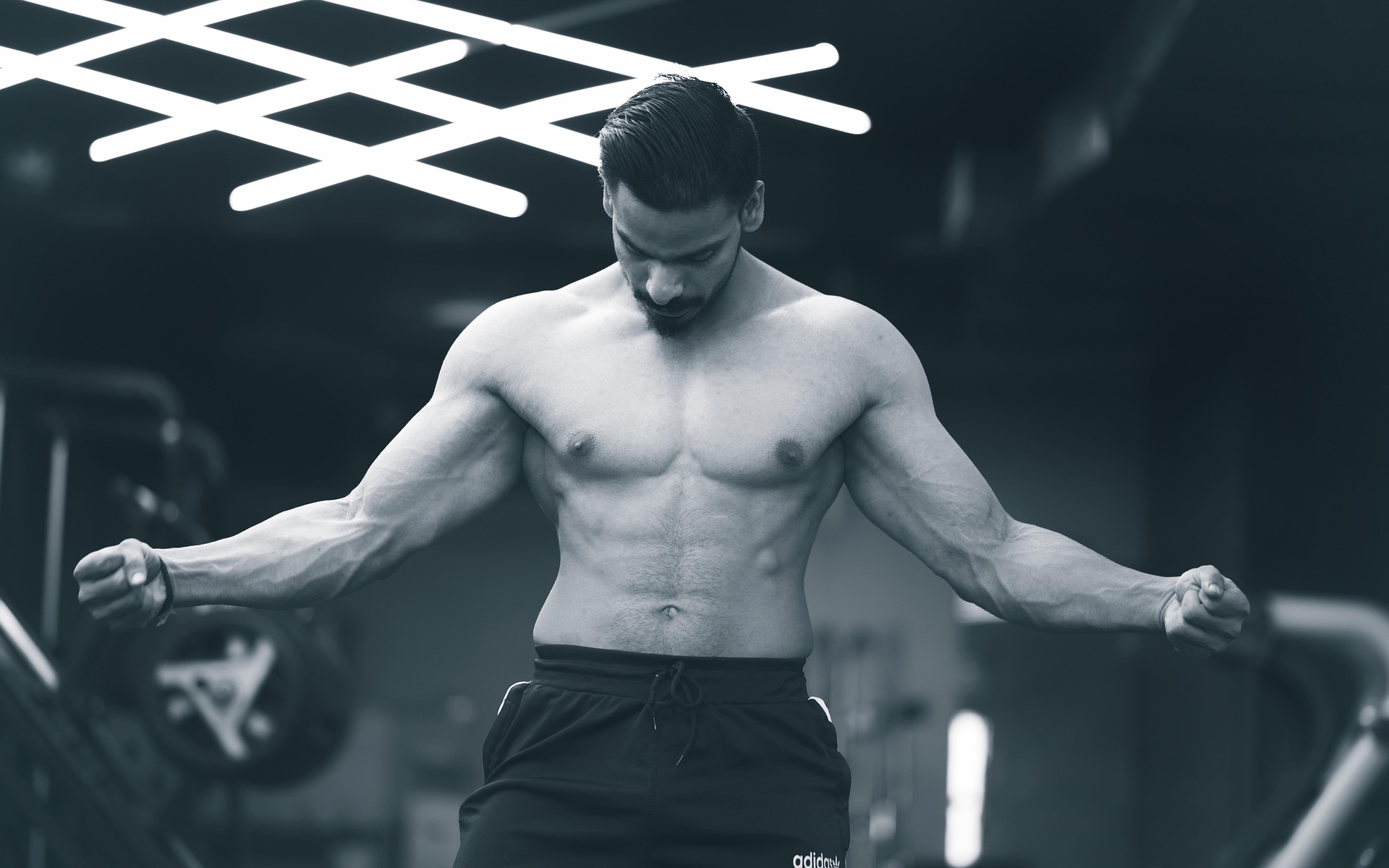Dynamic Tension: Charles Atlas's Legacy in Modern Fitness
Muscles rippling beneath sun-kissed skin, a chiseled physique that exudes strength and vitality – this was the promise of Charles Atlas's Dynamic Tension method. Born in the early 20th century, this revolutionary approach to bodybuilding without weights continues to influence fitness enthusiasts today. But how did a scrawny Italian immigrant become the epitome of masculine strength, and why does his method still resonate in our high-tech fitness era?

This observation led to the development of his Dynamic Tension method. Siciliano began experimenting with isometric exercises, using the resistance of his own body to build strength. The results were transformative. The once-skinny youth blossomed into a paradigm of physical fitness, eventually changing his name to Charles Atlas – a nod to the Greek titan who held up the sky.
Atlas’s personal transformation became the cornerstone of his marketing strategy. His famous comic strip ads, featuring a scrawny “97-pound weakling” who transforms into a muscular hero, captured the imagination of generations. The promise was simple yet alluring: achieve the body of your dreams without expensive equipment or gym memberships.
The Science Behind Dynamic Tension
At its core, Dynamic Tension relies on isometric exercises – contractions of a particular muscle or group of muscles against an immovable object or opposing force. This technique creates tension in the muscles without any visible movement of the joint angle.
Modern research has shed light on the effectiveness of isometric training. Studies have shown that isometric exercises can lead to significant strength gains, particularly in the specific joint angle at which the exercise is performed. They’re also effective in improving muscle endurance and can be particularly beneficial for rehabilitation purposes.
One of the key advantages of Dynamic Tension is its accessibility. The method requires no equipment, making it ideal for those with limited resources or space. This democratization of fitness was revolutionary in Atlas’s time and remains relevant today, especially in an era where home workouts have gained renewed popularity.
However, it’s important to note that while isometric training has its benefits, it also has limitations. The strength gains are often specific to the joint angle trained, which may not translate to improved performance across a full range of motion. This is why modern fitness routines often combine isometric exercises with dynamic movements for a more comprehensive approach.
The Psychology of Self-Improvement
Charles Atlas wasn’t just selling a workout routine; he was selling a dream. His marketing tapped into the deep-seated desire for self-improvement and the belief that physical transformation could lead to a better life. This psychological aspect of Atlas’s approach was perhaps as crucial to its success as the exercises themselves.
The idea that one could transform from a “weakling” to a “he-man” through sheer willpower and consistent effort resonated deeply with many, particularly young men. Atlas’s program promised not just physical strength, but also confidence, respect, and even romantic success.
This holistic approach to self-improvement, linking physical fitness with mental and social wellbeing, was ahead of its time. Today, we recognize the interconnectedness of physical health, mental health, and overall life satisfaction. Atlas intuited this connection and made it a central part of his pitch.
The psychological benefits of exercise are now well-documented. Regular physical activity has been shown to reduce symptoms of depression and anxiety, improve mood, boost self-esteem, and enhance cognitive function. In this light, Atlas’s promises of overall life improvement through physical fitness weren’t just clever marketing – they were grounded in what we now understand to be scientific fact.
Dynamic Tension in the Modern Fitness Landscape
While the heyday of Charles Atlas’s mail-order empire has long passed, the principles of Dynamic Tension continue to influence modern fitness practices. The method’s emphasis on bodyweight exercises and the mind-muscle connection can be seen in contemporary workout trends.
Calisthenics, a form of strength training that relies primarily on bodyweight exercises, shares many similarities with Dynamic Tension. Both methods emphasize mastery over one’s own body, requiring no external equipment. The popularity of calisthenics in recent years, particularly in urban settings where practitioners use park equipment for pull-ups and dips, echoes Atlas’s vision of accessible fitness.
Similarly, the rise of yoga and Pilates in Western fitness culture reflects a growing appreciation for exercises that emphasize body control, flexibility, and the mind-body connection – all elements that were central to Atlas’s approach.
Even in weightlifting circles, the importance of the mind-muscle connection – focusing intently on the muscle being worked during an exercise – is widely recognized. This concept, which Atlas emphasized heavily in his teachings, is now backed by research showing that conscious focus can enhance muscle activation and growth.
The Legacy of Charles Atlas
Charles Atlas’s influence extends far beyond the realm of fitness. He was one of the pioneers of direct marketing, and his comic strip ads set a template that would be imitated for decades. The idea of the before-and-after transformation, now a staple of fitness marketing, was largely popularized by Atlas.
In popular culture, Atlas became synonymous with male strength and virility. References to him appear in music, literature, and film, cementing his status as a cultural icon. The phrase “97-pound weakling,” coined in his ads, entered the lexicon as a shorthand for physical inadequacy.
But perhaps Atlas’s most enduring legacy is the democratization of fitness. By promoting a method that required no special equipment or gym membership, he made physical self-improvement accessible to anyone willing to put in the effort. This ethos – that a better body and, by extension, a better life is within reach for everyone – continues to inspire fitness enthusiasts today.
Criticisms and Controversies
Despite its popularity and longevity, the Dynamic Tension method has not been without its critics. Some argue that the system oversimplifies the complexities of muscle growth and physical fitness. While isometric exercises can indeed build strength, they don’t necessarily lead to the kind of muscle hypertrophy (increase in muscle size) that many associate with bodybuilding.
There’s also the question of whether Atlas’s own impressive physique was solely the result of his Dynamic Tension method. Some skeptics argue that Atlas likely incorporated other forms of training, including weight lifting, to achieve his muscular build. The exaggerated claims in his advertising, typical of the era but questionable by today’s standards, have also been a point of contention.
Moreover, the gendered nature of Atlas’s marketing, which primarily targeted men and played on insecurities about masculinity, feels outdated in the context of modern, more inclusive fitness culture. The focus on achieving a specific body type as a path to social and romantic success is now recognized as potentially harmful, promoting unrealistic expectations and body image issues.
Adapting Dynamic Tension for the 21st Century
While the original Dynamic Tension course may seem quaint by today’s standards, its core principles can be adapted and integrated into modern fitness routines. Here are some ways to incorporate Atlas’s ideas into contemporary workouts:
-
Isometric holds: Incorporate planks, wall sits, and other static holds into your routine. These exercises build strength and endurance while requiring minimal space and no equipment.
-
Mind-muscle connection: During any exercise, focus intently on the muscle group you’re working. This conscious connection can enhance muscle activation and growth.
-
Progressive overload: Atlas emphasized the importance of gradually increasing the difficulty of exercises. This principle remains crucial in any effective fitness program.
-
Bodyweight mastery: Explore advanced bodyweight movements like handstands, muscle-ups, and pistol squats. These exercises embody Atlas’s ideal of complete control over one’s physique.
-
Holistic approach: Remember that fitness is about more than just physical appearance. Embrace the mental and emotional benefits of regular exercise.
-
Accessibility: Stay true to Atlas’s vision of fitness for everyone by exploring workouts that can be done anywhere, with minimal or no equipment.
The Future of Fitness: Lessons from the Past
As we look to the future of fitness, with its high-tech gym equipment, DNA-based workout plans, and VR exercise experiences, it’s worth remembering the simplicity and accessibility of methods like Dynamic Tension. In a world where fitness can sometimes feel like an expensive, exclusive club, Atlas’s vision of strength and health for all remains powerfully relevant.
The enduring appeal of bodyweight exercises, the growing recognition of the mind-body connection in fitness, and the ongoing popularity of home workouts all owe a debt to pioneers like Charles Atlas. His legacy reminds us that at its core, fitness is about the journey of self-improvement – a personal quest that requires no special equipment, just dedication and consistent effort.
As we navigate the ever-evolving landscape of health and fitness, the story of Charles Atlas offers valuable lessons. It teaches us the power of marketing and the importance of making fitness accessible. It reminds us to be critical of exaggerated claims while remaining open to innovative approaches. And perhaps most importantly, it underscores the timeless appeal of the promise of self-transformation through physical fitness.
Charles Atlas may no longer be a household name, but his influence ripples through the modern fitness world. From the bodyweight exercises in popular HIIT routines to the emphasis on mental focus in weightlifting, from the democratization of fitness through online platforms to the ongoing quest for the perfect physique, echoes of Dynamic Tension persist.
In an age of complex fitness solutions, there’s something refreshing about Atlas’s simple, direct approach. Strip away the dated language and exaggerated claims, and you’re left with a core message that still resonates: Your body is a powerful tool, and with consistent effort and the right approach, you can transform it and, by extension, your life.
The Enduring Power of Self-Improvement
The story of Charles Atlas and his Dynamic Tension method is more than just a footnote in fitness history. It’s a testament to the enduring human desire for self-improvement and the power of a compelling narrative in marketing. Atlas sold more than just a workout routine; he sold hope, confidence, and the promise of a better life through physical fitness.
While our understanding of exercise science has advanced significantly since Atlas’s heyday, many of his core principles remain valid. The importance of consistency, the power of bodyweight exercises, the mind-muscle connection, and the holistic benefits of physical fitness are all ideas that have stood the test of time.
As we continue to navigate the complex and often contradictory world of fitness advice, perhaps we can take a page from Atlas’s book. Not the exaggerated claims or the dated gender stereotypes, but the core belief that improving our physical selves can have profound effects on our overall well-being. And that this journey of self-improvement is available to everyone, regardless of their starting point or the equipment at their disposal.
In a world that often seems to prioritize quick fixes and instant results, the Charles Atlas story reminds us of the value of patience, consistency, and hard work. It encourages us to view fitness not as a destination, but as a lifelong journey of self-discovery and improvement.
As we look to the future of fitness, with its exciting technological advancements and scientific breakthroughs, let’s not forget the simple, powerful message at the heart of Atlas’s philosophy: Your body is an incredible tool, and with dedication and the right approach, you have the power to transform it. In this sense, we are all still living in the world Charles Atlas helped to create – a world where physical self-improvement is not just a possibility, but a pathway to a better, more confident, more capable version of ourselves.
The legacy of Charles Atlas and Dynamic Tension serves as a bridge between the past and future of fitness. It reminds us that while methods and technologies may change, the fundamental human desire for self-improvement remains constant. As we continue to evolve our understanding of fitness and health, we would do well to remember the lessons of this unlikely strongman – that strength comes in many forms, that consistent effort yields results, and that the power to change our bodies and our lives lies within our own hands.
In the end, the story of Charles Atlas is not just about building muscles or selling a fitness program. It’s about the transformative power of belief – belief in oneself, belief in the potential for change, and belief in the idea that with the right mindset and approach, we can all become the heroes of our own stories. This, perhaps, is the true strength of Dynamic Tension – not just the tension between muscles, but the dynamic tension between who we are and who we aspire to be. In this ongoing journey of self-improvement, we are all, in our own ways, following in the footsteps of that once-scrawny immigrant who dared to reimagine himself and, in doing so, reshaped the world of fitness.





